Hello, all!
Given that I am uncertain of this blog's audience, there is not a way to properly address the masses of you who are keeping up with Andrew's shenanigans abroad. This is Kelsey writing; I apologize for my tardiness in publishing an entry here. (As much as Andrew has chided me to write about my trip, my professors are remarkably more pushy and thus my attention has been concerned with school.) Also, recognizing the fact that I am merely a guest author here, I'll try to keep this as interesting as possible, because, frankly, you didn't sign on to hear what
I had to say. That said...
I had an amazing time in Chile. (That feels like a rediculous, silly thing for me to assert because I can't imagine
not having an amazing time in Chile...it's CHILE!) Although the trip in itself was not without its highlights, I think the most important thing I took away from my week was how very different the culture was than I had expected it to be. In so many words, I'll try and illustrate for you what my "grand adventure" was like. I've never subscribed to the notion that a picture is
worth 1000 words, because I think the two (words and pictures) are nothing without the other, so I think the best way for me to portray my trip is to
show you my trip. In my opinion, Andrew has done a swell job of defining the Chilean experience thus far, but while I was there, I tried to capture the things that he has perhaps overlooked so that you can get another view of everything.
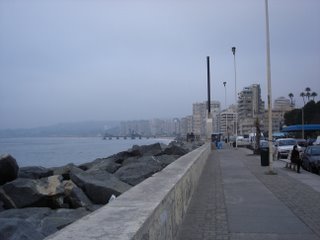
I'll start with the cities themselves. I was shocked at how large both Viña del Mar and Valparaíso were. I'm not sure how I arrived at this thought, but I had presumed that each of them were slightly smaller than Fort Collins, and roughly 30 miles apart. That couldn't have been further from the truth: practically one city, together they constitute an area roughly the size of downtown Denver with eight times the density. I was agape at the aggregation of humanity everywhere, even late at night. High rises line the streets, which are all as bustling as any major thoroughfare in the states. Busses are omnipresent. The only difference I could sense in the design of the city was that businesses and residences were practically next to each other, as opposed to being separate sections of the city.
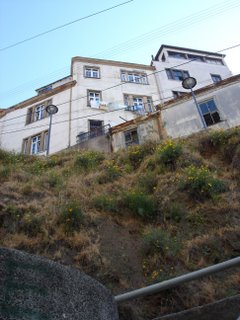
This photo gives a sense of the architecture and development in Valpo: everything is built right into the hillside, which rises up from a large half-moon bay. The city is not even remotely accessible; even if a wheelchair
could navigate the traffic (noted for its total disregard for pedestrians) and forty-five degree hills, the pavement and sidewalk system are, well, asymmetric at best. (Andrew can attest to the VAST number of times I tripped while we toured the cities. It was absolutely pathetic.)
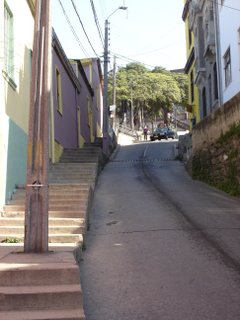
This photo shows a hill close the the hostel I stayed in. Shortly after I arrived in Valparaíso, Andrew took me down to the ISA office to meet his friends, and then took off to take an exam - leaving me to find my way home. He gave me pretty clear instructions as to how to navigate the system of micros and other public transport in my quest to make my way home, but I was so overwhelmed from a) lack of sleep, b) lack of a way of expressing myself, c) lack of understanding of cultural norms (greeting people, initially, was
really hard for me) and d) lack of ability to read street signs and such that I decided it was in my best interest to walk home. This was against Andrew's wishes, but I armed myself with a map of the area and a positive attitude and set out for the hostel. It took a little more than an hour to walk an area of about three square miles, but I was so lost for a chunk of that time that I passed by one particular road about eight times.
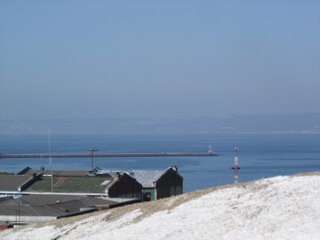
Not be deterred, though, I even stopped and asked a lady on the street for some directions. That turned out to be a rather large mistake; not only did I not understand a word that came out of her mouth, I think I may have offended her by not responding. I discovered fairly quickly that, as Andrew's friend Luke puts it, learning Spanish in Chile is like learning English in the Bronx. Chileans commit virtually every language offense in existence: no one pronounces an "s" (
ever), so phrases like "mas o menos" come out sounding something like "mahomenah," which is totally unrecognizable to a foreiner; they speak very quickly and slur most of their dialogue; a sizable chunk of their vocabulary is unique to Chile, meaning that words like "aguacate" ("avocado" in English) that exist elsewhere in the Spanish-speaking world are replaced in Chile with another word (in this case, "palta" - that's one I'm not going to forget for a while). I boarded my flight to Chile with total confidence in my Spanish abilities after a total of two and a half semesters of learning the language; needless to say, I was humbled very, very quickly. It is little wonder to me that Andrew was so overwhelmed at first. On the other hand, however, I am absolutely shocked and impressed with the amount of Spanish he has learned in just two short months. He is fully capable of communicating with virtually anyone on virtually any topic; I would call him fluent, though I'm certain he'll protest. I couldn't believe how fast he's picked up the language - complete with accent - after only three semesters of Spanish here in the states. Almost everywhere we went, native Chileans told him that he spoke excellent Spanish for a foreigner, and I think the only reason they knew he wasn't native was because I was with him (and the blonde ponytail kind of gives me away).
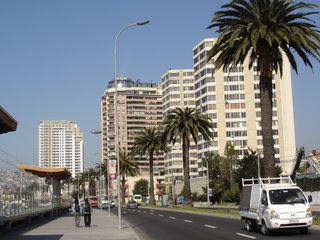
The climate was interesting, too. Like most oceanside cities I have visited (all five of them), palm trees abounded, but unlike those other four cities, so did evergreen trees. The ocean breeze kept me rather cool for most of my visit. It warmed up a bit during the day, but I often ended up wearing a down vest by three or four in the afternoon.
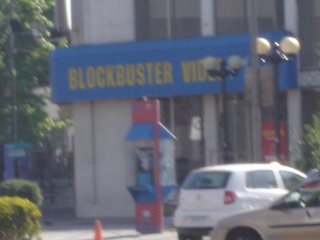
I spotted this on my walk back to the hostel on my first day: talk about a slice of home! Other than the McDonald's in Viña del Mar, this was the only piece of modern-day Americana I could find. Even the cars are all more European than American. (I guess no one really has use of an SUV there...but then again, most people in the US don't, either, but that doesn't seem to have halted consumption.)
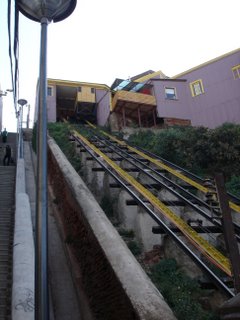
This picture scares me just to look at. The famous ascensor is truly one thing that I would die happy to never see again. Like an outdoor elevator from the '60s, it's basically everything that I've ever been afraid of, rolled into one: heights, confined spaces, and rickety engineering that hasn't been inspected since its inception. It also, as Andrew explained a bit ago, has a track record of coming off its rails and plummeting downhill. The two times I took it (while taking my life in my hands) I was against my will, and truly the only thing that could have made the experience worse was to be confined in one with a serial killer. Andrew tried to distract me by explaining that one has an unparalleled view of the city out the window of the ascensor; while I agreed, I countered that one would have the same view on the stairs. Most of the time, that was my preference. Obviously.

As I wandered around the city that first afternoon, I noticed that a lot of the little houses - which were almost more like apartments in the area of Valparaíso I was exploring - were quite small, but people certainly made the most of their space. Here, the residents have turned their 5'x5' patio into a garden terrace, which I thought was striking. The house that Andrew is staying in is quite similar. His host mother, Maria Teresa (he just calls her Mamá so I'll call her that, too), has a rather large house for the area of Viña they live in. It's quite nice by Chile's standards, I think. I don't want to describe it as cluttered - I think a better word would be excessively decorated - but I was struck by how many more things there were in her house than there are in the typical North American house. Every surface had some kind of painting or dish or trinket on it. Being the bull in a china shop that I am, I was actually a little bit afraid that I was going to break something the whole time I was there. :-)
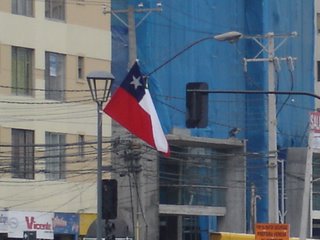
There were Chilean flags everywhere I looked! I noticed this particularly in very poor areas outside of the city - even when people were living practically in cardboard boxes, they had giant flags waving proudly from the front of their dwellings. Andrew recently informed me that it's an actual law that people have to fly the flag for the 18th of September, their independence holiday.
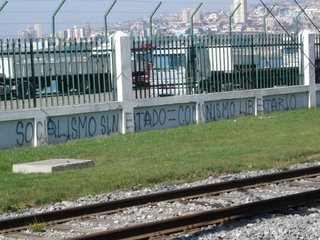
One of the coolest cultural differences I noted was that in Chile, most of the graffiti was somehow politically motivated. Unlike in the good ol' US, Chilean graffiti has something to say. Sure, it's still destructive, but at least it's not just senseless.
Here, painted on the retaining wall next to the Metro tracks: "Socialismo Sin Estado=Comunismo Libertario" (Socialism without state=free Communism").
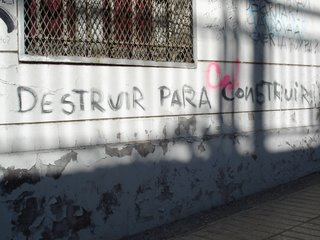
Another bit of pointed graffiti: this one says, "DESTROY TO CONSTRUCT." (You probably didn't need a dictionary for that one, though. Cognates.)
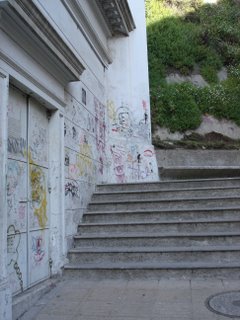
Not all of the streetside artwork was benign, though. This is what a typical stairwell, bus seat, and alley looked like. This is sort of the image I have in mind when I think of Chile as a "developing country."
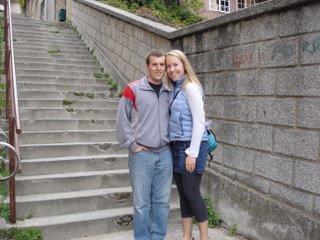
One for posterity.
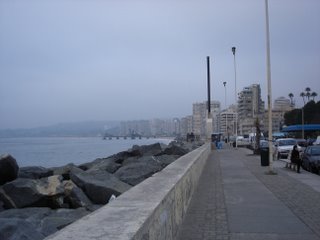
Alright. By now hopefully you have a taste of what the cities are like, and I can move on to what I really, really enjoy most: the BEACH. I realize that I already posted this photo, but I need to tell the story behind it and I didn't want you to have to scroll up and down over and over between the picture and the story. (I really do have your best interest, dear reader, in mind.) One day, while we were walking down this boardwalk - which Andrew tells me is often packed with people but which we found completely abandoned - a couple of gypsies approached us. (Gypsies! I didn't think they actually existed anymore, or, quite honestly, ever.) They looked exactly how one might expect a gypsy to look, particularly if you've only ever thought of them as fictional characters. (What would you expect a UNICORN to look like if it approached you on the street? Yeah, me too. You get the picture.) Anyhow, they thrust a few tarot cards into Andrew's hand and then demanded that he pick one so they could read his fortune. And I really do mean demanded: when he refused, one of the two of them told him that she was going to read his fortune on his palms. When he refused THIS, she told him, "Okay, then I'm going to read the fortune on your FOREHEAD." (Keep in mind that throughout this interchange they're speaking rapid-fire Spanish and I don't have a
clue what is going on; after two minutes of this, I was convinced they were performing some kind of curse on Andrew and I was absolutely freaking out.) In the end, no crime was commited, Andrew paid them something on the order of 20 cents and we continued on our jolly way, being more careful of avoiding the rest of the gypsies on the rest of the boardwalk. (They were everywhere! I couldn't believe it!)
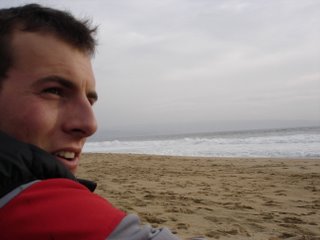
So. The next few shots are from the beach in Reñaca, which is just on the other side of the large bay from Viña and Valpo, and a rather long walk down the boardwalk from where we encountered the gypsies. (We didn't walk. We took a micro.) Now, granted that I'm a bit of a city slicker, but I've spent a reasonable amount of time (considering I live in Colorado) watching the waves roll in off the Atlantic Ocean in Cape Cod, so I wouldn't consider myself a stranger to a large tide. Given that, I COULD NOT BELIEVE HOW BIG THE WAVES WERE IN REÑACA. It was INTENSE. From our vantage point some forty feet from the actual tide line, it looked like the waves were at
least ten to fifteen feet high. Take a look at the next few pictures:
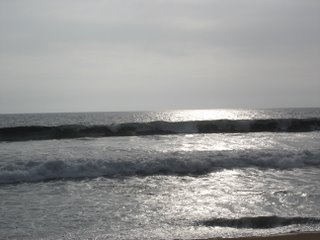

(Note the surfer in the right-hand corner.)
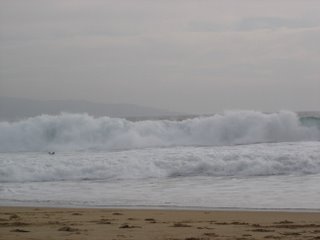
Again...see the boogie boarder on the left-hand side, just below the wave? I'm happy to report that he lived through that.
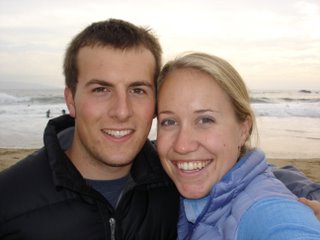
The highlight of my whole trip was just hanging out in the sand on this beach, watching the tide roll in at sunset.
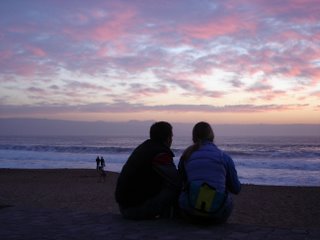
So. Since I've returned, everyone's favorite question to ask is "What did you do in Chile?" I'm having a hard time answering, because I don't feel like Andrew and I really
did a whole lot of interesting things...we walked around, we ate out a bunch, we spent some time on the beach, all of which sound like typical activites. (I thoroughly enjoyed every minute, mind you, and since it was Chile, it didn't feel "typical" - but it's hard to describe such commonplace activities with much verve.) It was hard to really get out and explore beyond the cities when I was only there for a week. That said, we spent a day in Quintay, which was rather noteworthy. Allow me to explain.
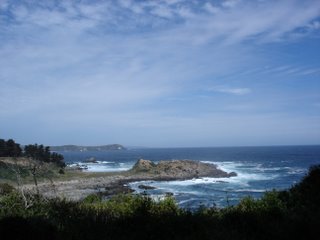
As you'll remember, Quintay is the little fishing village that Andrew thought looked like New England that he visited a couple of months back. One morning we took a collectivo down there with two goals in mind: watch the tide and eat some fish. It was BEAUTIFUL, and really rather different than I had expected it to be. As you can probably already tell, ¡las olas me fascinan! (The waves fascinate me!) Most of the pictures I took here are of waves, and while I took a bunch, they won't look like much without the full effect of sight+sound+spray, so I'll only post a few.
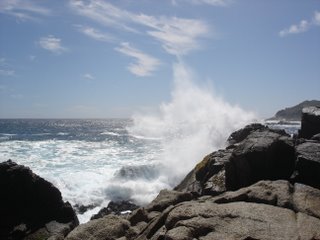
The photo doesn't do it justice, and the lack of sound doesn't help, either.
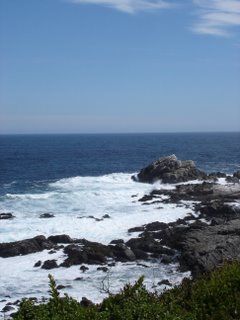
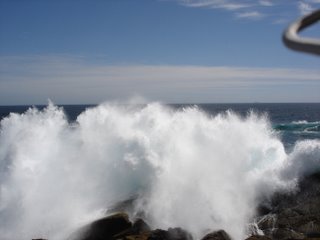
This is one of my favorite shots, although, sadly, my camera strap decided to make its debut in the upper corner of the picture. Ah, well, I won't quit my day job.
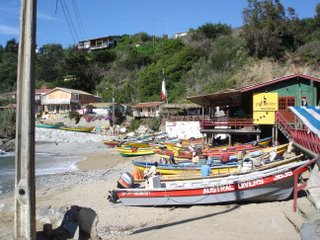
This was pretty much all I got to see of the village that was Quintay, but it was lovely, rather picturesque; as you can tell by the picture on the left, several clapboard (is that the word?) restaurants lined a small bay where native fishermen caught the day's menu. Andrew and I even got to see them sewing up their nets during the noon hour while several stray dogs chased each other in the surf. We ate lunch on a balcony overlooking the bay, and our view is what you'll see in the picture below.
This is one of my favorite pictures from the whole trip - I think it captures an idealized South America, one that is all coastline and small fishing boats and dirt roads and happy foreign travelers and natives who are kind to them. (I also like it because Andrew is in it.)
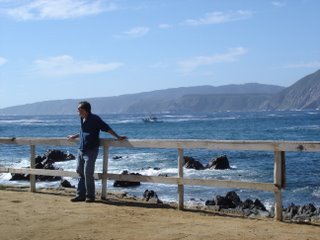
After our trip to Quintay, we had one more day of tooling around Valpo before I had to board a plane back to the states. As it turned out, I got incredibly sick on the way home and spent the vast majority of my nine-hour flight in the bathroom. I think my body was just reflecting how my heart felt. Needless to say, I wasn't exactly excited to come home and leave Andrew behind, but there wasn't much way around it.
And now...I think I've reached the end. If, by some miracle of God, you're still reading this and even mildly interested, THANK YOU for putting up with my incredibly long-winded recount; I appreciate your patience. I apologize for my tardiness in posting this entry as well. I'm happy to report, first-hand, that Andrew is alive and thriving in the south and that he's going to come home a better person for this experience. I am very lucky to have gotten to visit him and I wouldn't trade it for the world.
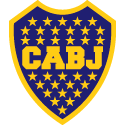 ¡Hola Amigos!
¡Hola Amigos!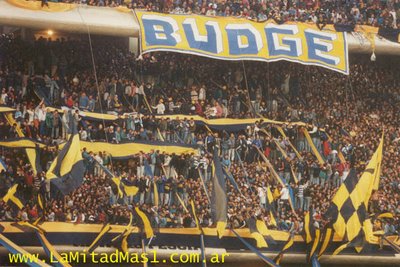
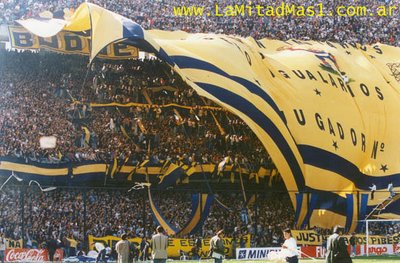
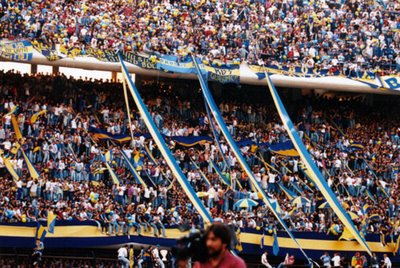
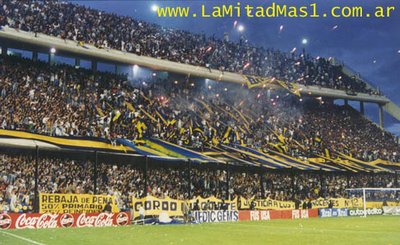

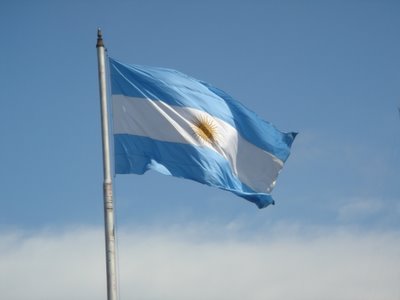
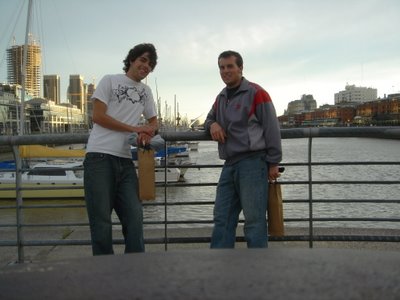 Luke and I by the harbor.
Luke and I by the harbor.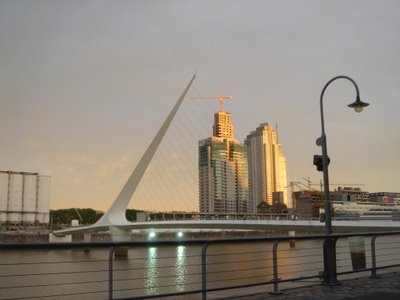
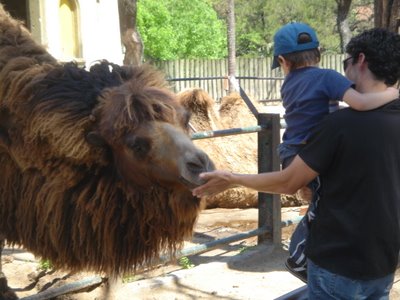
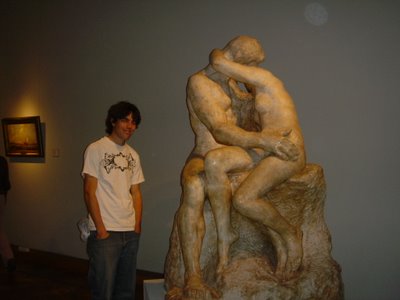
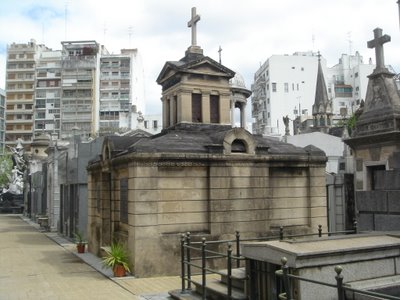
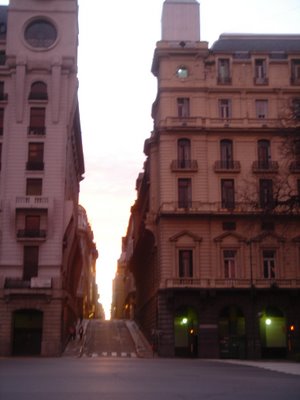 Don't let the picture fool you. This is an intersection of two very busy streets at sunset. I took the picture from the window of the taxi, and I don't know how there aren't any cars in the shot.
Don't let the picture fool you. This is an intersection of two very busy streets at sunset. I took the picture from the window of the taxi, and I don't know how there aren't any cars in the shot. 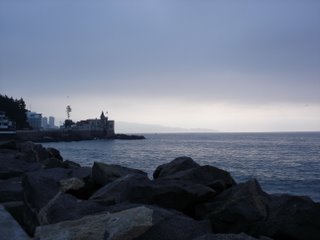



























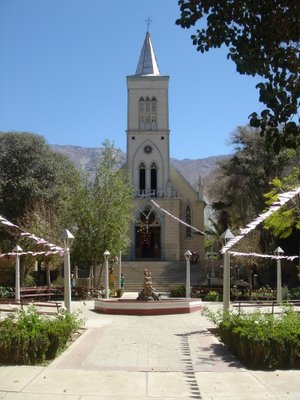
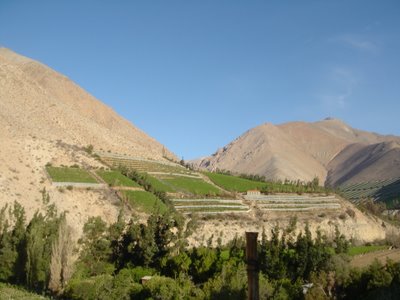
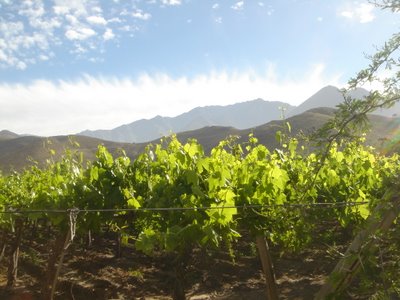 Vineyard, mountains.
Vineyard, mountains.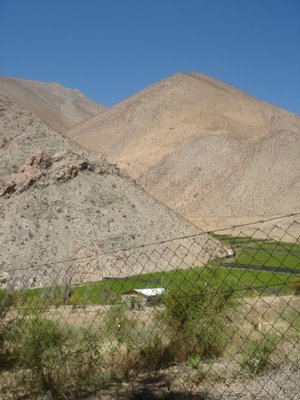
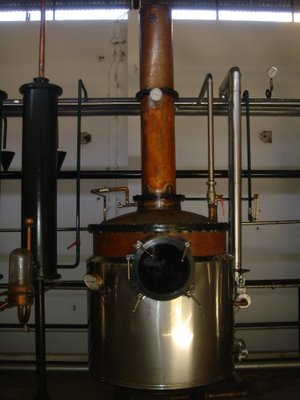 The double distiller. The wine is put in the big steel thing and heated. The steam moves through the copper tube and re-condenses into the small glass jar on the left of the picture.
The double distiller. The wine is put in the big steel thing and heated. The steam moves through the copper tube and re-condenses into the small glass jar on the left of the picture. Bus break down.
Bus break down.